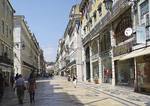Landscape students pave way for innovative designs
 Architecture Architecture
Climate change and crippling petrol prices are presenting new challenges for the next generation of landscape architects. Students from the School of Architecture, Landscape Architecture and Urban Design are rising to that challenge thanks to the guidance of one of Australia's most environmentally conscious landscape and architectural firms. Sydney-based McGregor & Partners recently delivered an intensive two-week course to the University's landscape architecture students, forcing them to look at the repercussions of climate change and escalating fuel costs on a global and local scale. Students took part in an in-house research unit, the Biocity Studio, tackling different environmental crisis scenarios in Adelaide and providing design and policy solutions. Landscape Architecture Program Coordinator Tanya Court said the cross disciplinary studio produced a number of innovative projects, including scenarios to prevent waste and encourage recycling, new policies to prevent biodiversity loss and initiatives to stop further sprawl for metropolitan Adelaide. Student Tim Clark proposed a standardised recycling scheme across all Adelaide councils, funded by levies imposed on manufacturers and retailers, and a labelling system for all products. "The manufacturing sector has to change its processes if we are to minimise waste and maximise the use of recycled products," Tim said. "My proposal endorsed a system where 100% of Australian products are recycled." Chinese student Yingya Su tackled the issue of biodiversity loss due to climate change. "A wide range of crisis scenarios is associated with biodiversity loss. The first to be affected in Adelaide would be tourism, followed by agriculture - two areas that are critical to the State's economic health," she said. Yingya Su's solution was to integrate the protection of biodiversity and the ecosystem into urban planning and development policies. "We need to create linkages between areas of biological significance, teach biodiversity in schools, university and in the community as well as encourage practical solutions, such as planting native trees and establishing community nurseries." Saudi Arabian student Nawaf Alhajaj flagged a scenario where petrol prices hit $8 a litre by 2018, placing intense financial pressure on residents and commuters. "My solution was to concentrate residential developments in the city centre, increasing the population density with high rise buildings and creating CBD accommodation for 300,000 residents by 2020. "I compared Adelaide with Copenhagen and Lisbon - cities of similar population - and found that they managed to house their residents in a far more compact way without compromising their architectural style." Ms Court said the course required students to research, debate and present their design and policy solutions for sustaining city growth without jeopardising the environment. McGregor & Partners, who work with a number of architectural students across all Australian universities, will publish the most outstanding projects in a book based on the Biocity Studio findings. Story by Candy Gibson
|





